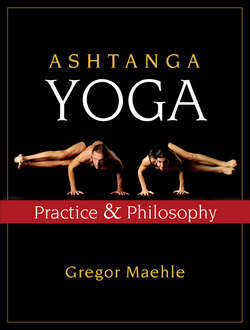Читать книгу Ashtanga Yoga - Gregor Maehle - Страница 92
На сайте Литреса книга снята с продажи.
Оглавление
FIGURE 7 HAMSTRINGS AND QUADRICEPS
Bending forward should involve flexing the hip joints and not the spine. The flexing of the hip joints is limited by the hamstring muscle group, which performs the action of hip extension and knee flexion. The hamstring group consists of three individual muscles. Of these the biceps femoris externally rotates the femur as it extends the hip, and the semitendinosus and semimembranosus internally rotate the femur as they extend the hip. We will encounter these muscles later in their secondary function as rotators of the femur.
If we passively hang in Padangushtasana, soreness can develop at the ischial tuberosities (sit bones), which is the origin of the hamstrings. To prevent this we need to engage the antagonists of the hamstrings, the quadriceps.
The quadriceps is engaged by pulling up on the kneecap (patella). The quadriceps consists of four separate muscles that jointly insert, via the patella tendon, at the tibia. The four heads of the quadriceps are the rectus femoris, vastus lateralis, vastus intermedius, and vastus medialis. The rectus femoris is the only two-joint muscle in the group. It originates at the front of the hip bone and can thus not only extend the leg at the knee but also flex the hip joint. The three vasti originate at the lateral, anterior, and medial surfaces of the femur respectively, and only perform extension of the knee joint.
